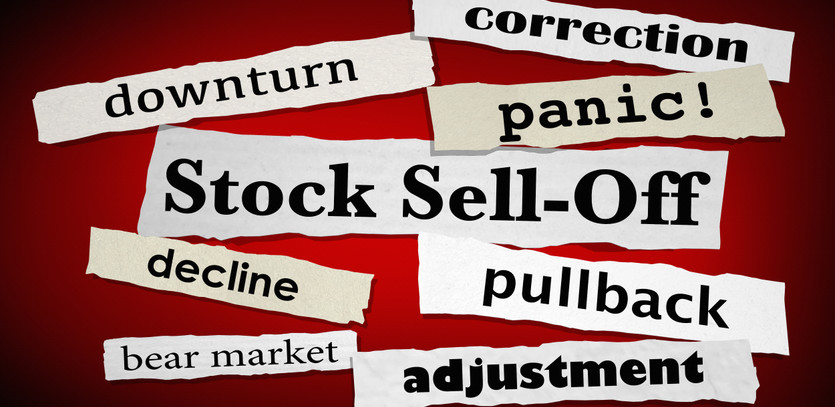Introduction to Key Concepts
In the dynamic world of investment, understanding market movements, especially declines, can be a game-changer. Market corrections and bear markets, both depicting downtrends, operate on different scales and durations. While it may seem they are used interchangeably, they represent different levels of market decline and indicate various economic trends. Let’s unpack these terms to give you a clearer perspective on what each one entails and how they can influence your investment decisions.
Diving Deep into Market Corrections
A market correction is a moderate but noticeable dip in the market landscape, generally defined as a decrease of at least 10% but not more than 20% from its recent highs in a market index or an individual asset. These corrections can happen spontaneously and span across any duration. Investors view corrections as short-term downturns that recover faster, often within a few months, reinstating the market to its previous vibrancy.
It is vital to note that market corrections are frequent visitors in the bull market, appearing several times before the landscape undergoes a more pronounced downturn. Market corrections serve as vital checkpoints, allowing investors to recalibrate their strategies and often presenting buying opportunities for discerning investors.
Understanding the Bear Market Phenomenon
Transitioning from a correction phase, when the market experiences a decline that exceeds 20%, spanning at least two months, it enters what is known as a bear market. This situation presents a more severe downturn, engulfing broader market indices and taking a considerable time to bounce back, often extending to several years.
Bear markets are characterized by a prolonged duration and steep declines, making the recovery to previous highs a gradual process. The gravity of a bear market can be well understood by revisiting the instances like the COVID-19 induced bear market in March 2020 or the tumultuous period of 2007-2009 following the housing market crisis, where the financial landscape witnessed a substantial setback.
Illustrative Breakdown: Market Correction vs. Bear Market
To fully grasp the concepts of market corrections and bear markets, we delve deeper into a hypothetical yet illustrative breakdown using the benchmark of the financial market, the S&P 500 index. Through this lens, we can envisage the critical thresholds that delineate a market correction from a bear market, thereby arming investors with insights to navigate market downturns proficiently. Let’s examine this through a progressive decline in the S&P 500 index from a peak of 4,000 points:
Step by Step: Envisioning Market Dynamics
-
Initial Phase (No Correction Yet):
- Starting Point: S&P 500 stands strong at 4,000 points.
- Scenario: A hiccup occurs, and it slides down by 100 points.
- Analysis: With a 2.5% decrease, this does not qualify as a correction; it’s a normal market fluctuation that is quite routine in the investment sphere.
-
Entering the Correction Zone:
- Scenario: The downward trend gains momentum, plummeting an additional 300 points.
- Analysis: The aggregate loss now stands at 400 points, or 10%, from its zenith. This scenario squarely places the market in the correction territory, signalling caution and offering investment opportunities for discerning market players.
-
Deepening the Correction:
- Scenario: The index witnesses a further decline but remains above a 20% loss from its peak.
- Analysis: Although in a state of extended correction, it hasn't escalated to a bear market. It’s a period of heightened vigilance, where investors are keenly watching market trends, possibly recalibrating their investment strategies to cushion against a potential bear market.
-
Crossing into the Bear Market:
- Scenario: The decline continues relentlessly, breaching the 800 points loss mark.
- Analysis: The market has now entered a bear territory with a 20% or more decrease from its pinnacle, marking a phase of intensified downturn characterized by a generally pessimistic outlook and typically a slower recovery pace. It’s a period warranting strategic financial maneuvers to mitigate substantial investment losses.
Historical Context and Reflection
To put the above scenarios in context, we have witnessed such market dynamics in real-time during events such as:
- The COVID-19 Pandemic (March 2020): A rapid transition from a correction to a bear market ensued, engulfing the global financial landscape in a state of uncertainty and volatility.
- The Housing Market Crisis (2007-2009): This period saw a gradual but deep plunge, illustrating a bear market’s prolonged nature, which stretched across several months before reaching its nadir.
Through this illustrative breakdown, it becomes evident that being vigilant during the market corrections and foreseeing a potential bear market can be instrumental in devising informed and adaptive investment strategies.
Strategizing Your Response to Downturns
The unpredictability of the market necessitates a robust strategy to safeguard your investments during downturns. How one should respond varies greatly depending on individual financial standings, investment horizons, and objectives.
- Long-term investors: Those with a higher threshold for risk and a long-term investment horizon might find it beneficial to hold onto their investments, weathering the market's fluctuations.
- Retirees: People nearing retirement generally adopt a more conservative approach, possibly determining a specific threshold for selling assets to preserve their accumulated capital.
- Opportunistic investors: A section of investors adopt a counter-cyclical approach, utilizing the downturn to purchase stocks at diminished values, eyeing potential gains when the market recovers.
Tip: Regardless of your approach, it is always recommended to consult a financial advisor to help tailor a strategy that suits your individual needs and goals, ensuring a well-rounded and informed decision-making process.
Key Takeaways
To encapsulate, while market corrections and bear markets depict downturns, they vary significantly in their severity, duration, and frequency. Understanding these nuances can empower you to navigate the fluctuating market landscapes with informed strategies, potentially leveraging the downturns to your advantage.
- Market corrections, although frequent, are relatively short-lived, offering opportunities for strategic investments.
- Bear markets depict a deeper slump and take a considerable time to recover, requiring cautious and informed investment approaches.
Frequently Asked Questions (FAQs)
-
What were the recent instances of bear markets?
Recently, in 2022, major indices such as the NASDAQ and S&P 500 experienced bear markets, plunging at least 20% from their highs recorded in January 2022.
-
How often can one expect market corrections to happen?
Historically speaking, since 1929, we have seen around 26 bear markets. However, market corrections are notably more frequent, manifesting approximately every other year, portraying a natural rhythm of market dynamics.





